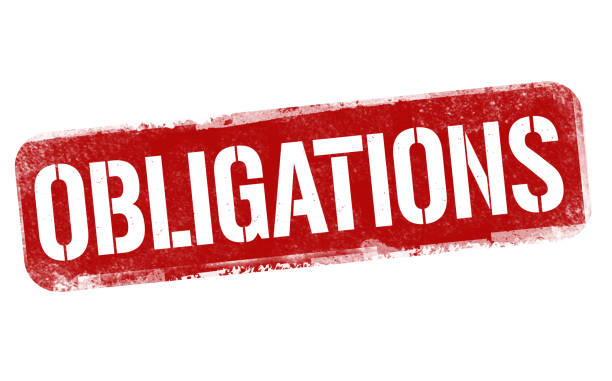

If you are not actively running your business, it is advised that you close it down. An open and legally active business will attract tax implications and liability obligations. In closing your business in Ontario, it is recommended you ensure that you follow all legal requirements and steps so that you won’t have to face avoidable headaches and problems.
Closing a business in Ontario, Canada involves several steps to ensure you properly dissolve your business and meet your legal obligations. It’s advisable to consult with a legal professional or a business advisor to guide you through the process.
Here in this article, we will look at the general steps to close a business in Ontario.
Disclosure: My site is reader-supported. I may get commissions when you click through the affiliate links (that are great products I use and stand by) on my articles.

How To Close A Business In Ontario
- Closing a business in Ontario, Canada involves several steps to ensure you properly dissolve your business and meet your legal obligations. It’s advisable to consult with a legal professional or a business advisor to guide you through the process.
- Here in this article, we will look at the general steps to close a business in Ontario.
How To Close A Business In Ontario – 10 Steps
Here is a general outline of the steps you may need to take to close a business in Ontario legally.
Step 1: Review Your Business Structure

Reviewing your business structure is an important step when considering how to close a business in Ontario. The process for closing a business can vary based on the type of legal entity you have established.
For a sole proprietorship, you must inform the Canada Revenue Agency (CRA) and the Ontario Ministry of Finance about the closure. For a partnership, the process is similar to that of a sole proprietorship. Still, first, the partners will need to agree on the dissolution of the partnership, settle outstanding debts, and file necessary tax returns.
For a corporation, you’ll need to pass a resolution to dissolve the company at a shareholders’ or directors’ meeting and File Articles of Dissolution with the Ontario government’s Business Registry. Also, you must notify the CRA, Ontario Ministry of Finance, and other relevant authorities about the closure.
Step 2: Pay Outstanding Obligations

Paying outstanding obligations is important when closing a business in Ontario. It’s important to settle all your debts, loans, taxes, and other financial obligations before finalizing the closure.
Make a comprehensive list of all debts, loans, and financial obligations your business owes. This could include outstanding invoices, loans from banks or creditors, lease or rental payments, and other financial commitments. If your business faces financial difficulties, consider negotiating with creditors and lenders to establish repayment plans, discounts, or settlements.
File your final tax returns with the Canada Revenue Agency (CRA) and the Ontario Ministry of Finance. Pay any outstanding income taxes, Goods and Services Tax/Harmonized Sales Tax (GST/HST), and other relevant taxes.
If you have employees, ensure payroll taxes and deductions are remitted following legal requirements.
Step 3: Cancel Business Registrations and Permits:

One of the significant steps to close a business in Ontario is to cancel business registrations and permits. This process ensures that your business is formally deregistered and you no longer have legal or regulatory obligations.
Suppose you operate a sole proprietorship or partnership and have registered a business name. You’ll need to cancel the registration. To do that, visit the ServiceOntario website and navigate to the “Business” section to find information and forms related to business name registration cancellation. Fill out the appropriate cancellation form and submit it with any required documentation and fees. If you have a registered corporation, you’ll need to dissolve the corporation with the Ontario government formally.
Review your business’s permits and licenses at the municipal, provincial, and federal levels. Contact the appropriate regulatory agencies or authorities to cancel these permits and licenses. They will guide the process and required documentation.
Step 4: File Taxes

Filing taxes is critical when closing a business in Ontario, Canada. You must ensure all your tax obligations are fulfilled before finalizing the closure. Also, ensure that your records are accurate for the period leading up to the closure.
Calculate the taxes owed based on your final tax return. This includes (GST/HST), and any other applicable taxes. If your business is a corporation, report the disposition of business assets on your corporate tax return. This includes assets sold, transferred, or otherwise disposed of as part of the closure process.
Step 5: Close Business Bank Accounts

The next step is to close your business bank accounts. Handling this process correctly ensures that all financial matters are settled and prevent future issues.
First, you must contact the business bank to inform them of your intention to close the accounts. Some banks may require you to visit a physical branch in person to initiate the closure process, while others may allow you to start the process online or over the phone.
Before closing the accounts, ensure that all outstanding transactions, including deposits and withdrawals, are processed and that there are no pending transactions. Also, ensure that all outstanding debts, loans, and overdrafts associated with the business bank accounts are settled before closing the accounts. This includes paying off any credit lines or business loans.
Do not forget to cancel any services associated with the business accounts, such as direct deposits, bill payments, and automatic withdrawals. Update your payment information with relevant vendors, clients, and organizations.
Step 6: Dispose of Assets

All your business assets must be disposed of when closing a business in Ontario. Properly handling the disposition of your business assets ensures that you wrap up your operations while fulfilling your financial and legal obligations.
In disposing of the assets, you should first create a comprehensive inventory of all business assets, including equipment, inventory, furniture, vehicles, intellectual property, and any other assets owned by the business. You may need to consult with appraisers or valuation experts for certain assets.
You can sell, transfer, donate, or scrap the assets. Consider online auctions, liquidation sales, or direct sales to interested buyers if you sell assets.

How To Close A Business In Ontario
- Closing a business in Ontario, Canada involves several steps to ensure you properly dissolve your business and meet your legal obligations. It’s advisable to consult with a legal professional or a business advisor to guide you through the process.
- Here in this article, we will look at the general steps to close a business in Ontario.
Step 7: Inform Relevant Authorities

Ensure you inform relevant authorities about the closure of your business. By completing the appropriate forms, notify the Canada Revenue Agency (CRA) about your business closure. You must file a “Request to Close Business Number” form for corporations. You may need to inform the CRA through your final tax return for other business types.
If applicable, notify the Ontario Ministry of Finance about the closure of your business and settle any outstanding provincial taxes, such as the Ontario Corporations Tax (if your business is a corporation).
If your business operates in a regulated industry, such as healthcare, finance, or transportation, notify the appropriate regulatory bodies about the closure.
Step 8: Wind Up Affairs

“Winding up affairs” refers to completing the remaining tasks and responsibilities associated with closing a business. This includes finalizing operations, settling financial matters, and ensuring all loose ends are tied up before officially ceasing business activities.
List all remaining tasks, obligations, and commitments that need to be addressed before closing your business. Prioritize them based on urgency and importance. Fulfill any ongoing contracts, orders, or projects in progress, and inform clients or customers about your business closure and how their needs will be met.
Close your business bank accounts and ensure that all outstanding transactions are cleared. This includes reconciling accounts and ensuring that all checks have been processed.
Provide employees with any remaining pay, benefits, vacation pay, and severance (if applicable). Ensure compliance with employment standards and contractual obligations.
Step 9: File Dissolution Documents

Filing dissolution documents is key in the process of closing a business. Depending on your business structure, no specific dissolution documents are required if you operate as a sole proprietorship or a general partnership. However, you should inform relevant government authorities, creditors, and stakeholders about the closure of your business.
If you’re closing a corporation, you must file dissolution documents with the appropriate government authorities. File Articles of Dissolution with the Ontario government’s Business Registry. This form provides official notice of your intent to dissolve the corporation. You can obtain the required form from the Ontario government’s website or by visiting a ServiceOntario location.
Step 10: Keep Records

Keeping accurate and organized records is a critical aspect of closing a business. Maintaining thorough records helps you fulfill legal requirements, manage financial obligations, and provide documentation for future reference.
Create a detailed record of each step during the business closure process. This includes notifications sent, meetings held, documents filed, and any agreements reached. Also, keep a record of the finances, including balance sheets, income statements, tax documents, bank statements, and records of all financial transactions.
Keep copies of all written correspondence, emails, letters, and notices exchanged with creditors, suppliers, employees, government agencies, and other stakeholders. Retain copies of all agreements, contracts, leases, and legal documents associated with your business, including asset disposition, debt settlement, and employee matters.
Store both digital and physical copies of records, and consider using cloud storage or secure digital platforms for easy access and backup. Ensure the records are securely stored and accessible to authorized individuals only. Protect sensitive information to maintain confidentiality.
Keeping comprehensive records will be valuable for future reference, tax audits, legal inquiries, and any potential questions that may arise after the closure of your business.
Maintaining organized and complete records demonstrates your commitment to responsible business closure and helps you avoid potential legal or financial complications or problems. If you’re uncertain about record-keeping requirements or best practices, seek guidance from professionals familiar with business closure procedures.
People Also Ask:
How Much Does it Cost to Dissolve a Company in Ontario?
The total cost of the Articles of Dissolution is $272.40. $149.00 is the fee for preparing the for filing and gaining approval. You will be charged $39.99 for submission filling, and the government fee is $25.00.
How Long Does it Take to Dissolve a Business?
The timeline for dissolving a business varies depending on factors such as the jurisdiction, the type of business entity, the complexity of the company’s affairs, and how efficiently the necessary steps are completed. It can take up to six months to dissolve a business in Ontario.
What is a Certificate of Dissolution Ontario?
A Certificate of Dissolution is an official document issued by the Ontario government’s Ministry of Government and Consumer Services. This certificate proves that a corporation has undergone the dissolution process and is no longer legally active. In other words, it confirms that the corporation has been legally closed and its existence has been officially terminated.
The Certificate of Dissolution typically includes important details about the dissolved corporation, such as corporation name, number, effective date, and dissolution reference number.
What Form of Business Ownership is Easiest to Dissolve?
Among the various forms of business ownership, sole proprietorships are generally considered the easiest to dissolve. A sole proprietorship is a business where a single individual owns and operates the business. Since the business and the owner are essentially the same, dissolving a sole proprietorship is relatively straightforward compared to other business structures.
Can a Company Be Dissolved Without Liquidation?
Yes, a company can be dissolved without a formal liquidation process, especially if its affairs are simple, its assets and liabilities are minimal, and there are no significant legal or financial complications. This approach is often called a “voluntary strike off” or “administrative dissolution,” it is typically applicable to smaller companies with relatively straightforward financial situations.

How To Close A Business In Ontario
- Closing a business in Ontario, Canada involves several steps to ensure you properly dissolve your business and meet your legal obligations. It’s advisable to consult with a legal professional or a business advisor to guide you through the process.
- Here in this article, we will look at the general steps to close a business in Ontario.
Conclusion
Ensure you follow the legal steps peculiar to your business when closing it. Do not leave any stone unturned, and ensure you consult legal personnel if you encounter issues during the closing process.






